October 8, 2014
Stargazers in the Americas and Asia were treated to a lunar eclipse Wednesday, a celestial show that bathed the moon in a reddish tint to create a "blood moon."
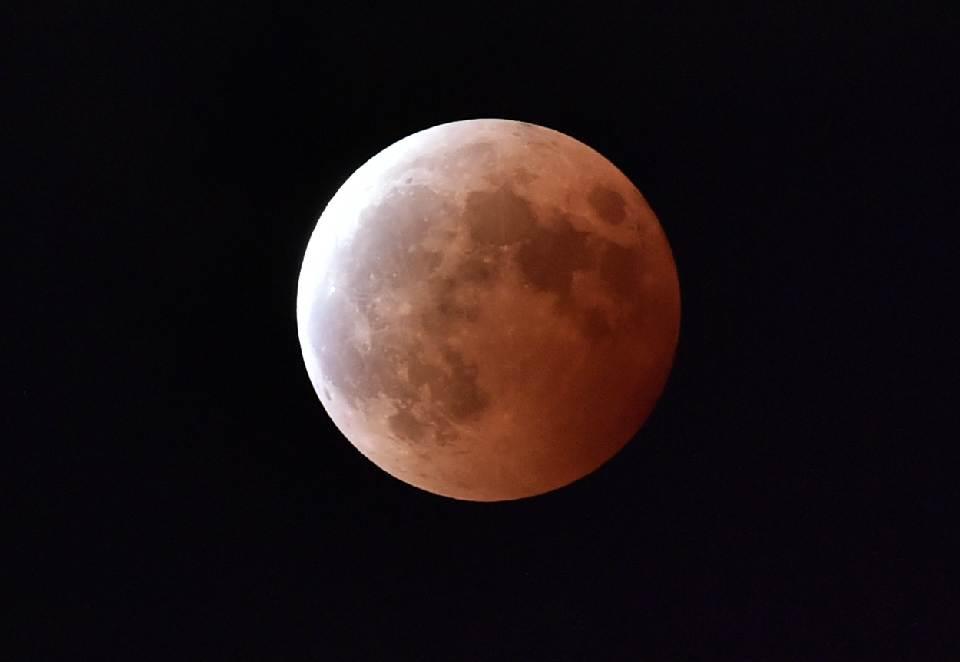
A "blood moon" lunar eclipse is seen in Tokyo on October 8, 2014
October 8, 2014
Stargazers in the Americas and Asia were treated to a lunar eclipse Wednesday, a celestial show that bathed the moon in a reddish tint to create a "blood moon."

A "blood moon" lunar eclipse is seen in Tokyo on October 8, 2014
During the total lunar eclipse, light beams into Earth's shadow, filling it with a coppery glow that gives it a red hue.
The early phase of the eclipse began at 0800 GMT, or 4:00 am, on the east coast of the United States.
NASA provided live footage via telescope of the eclipse, showing a black shadow creeping across the moon in a crawl that took about an hour.
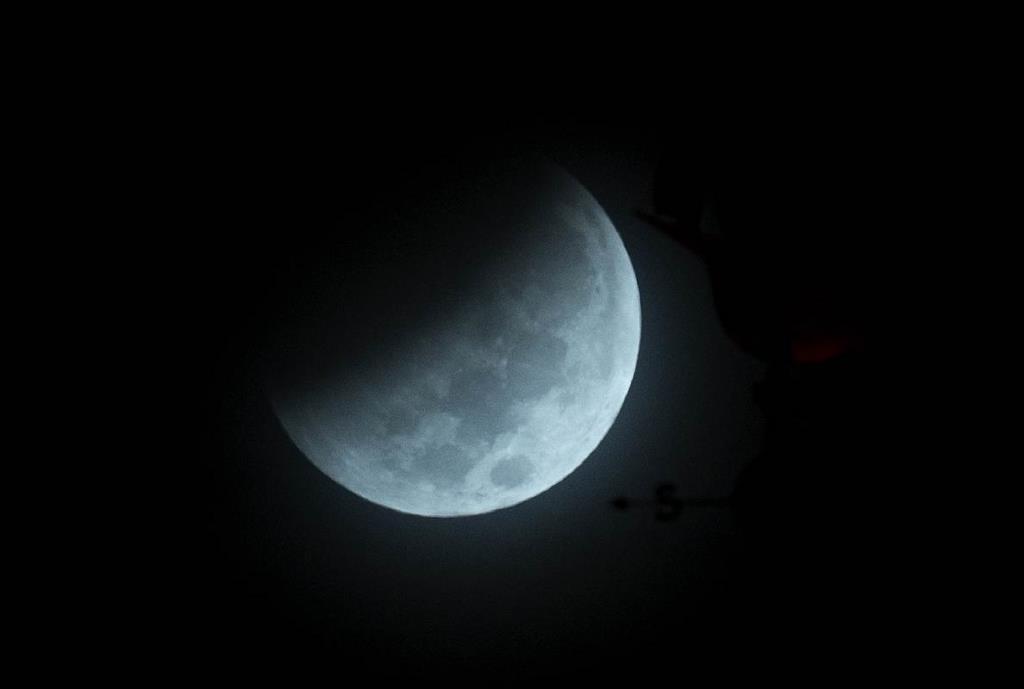
The Earth's shadow begins to fall on the moon during a total lunar eclipse, as seen above Miami, Wednesday, Oct. 8, 2014
Only when the moon was totally eclipsed did the redness appear. The total eclipse was also to last about an hour, and ditto for the return to its normal colour. The total eclipse happened at 6:25 am on the US east coast (1025 GMT).
The NASA web site was peppered with Tweets bubbling with questions and comments on the heavenly phenomenon.
"This is amazing. Thank you for this opportunity," read a Tweet from the handle @The Gravity Dive.
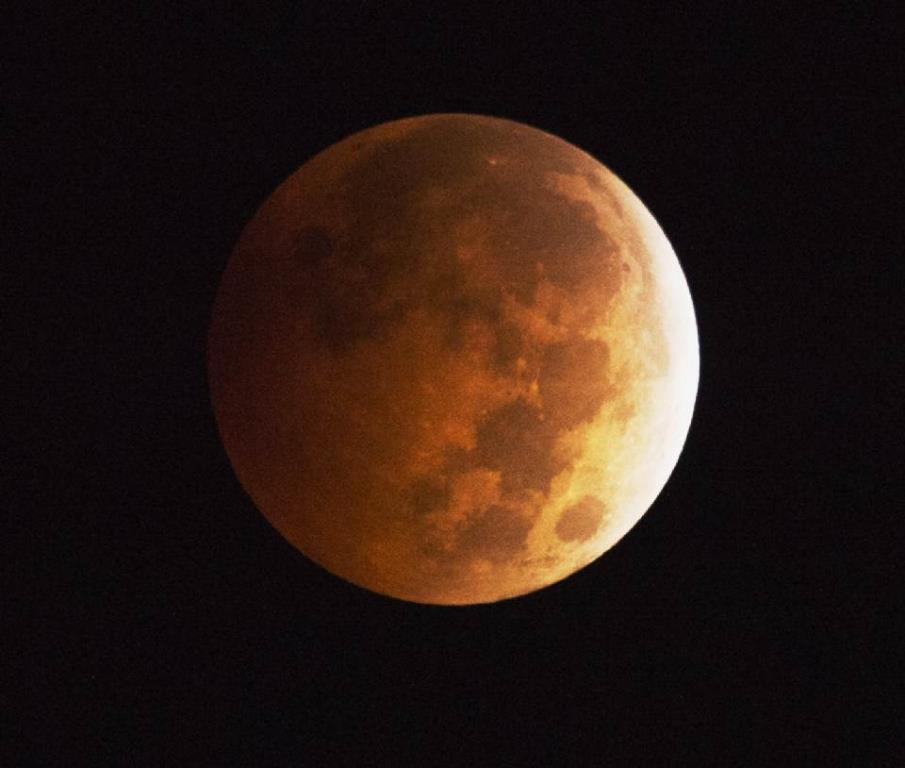
The moon takes on an orange-red hue as the earth's shadow covers it during a total lunar eclipse, in Griffith Park, Los Angeles on October 8, 2014
"Is there any crime increase during this process? Any psychological problems?" wrote a person who identified herself as Alisa Young.
Just before the climax, Kathi Hennesey in California wrote, "Watching from San Francisco Bay Area. Just a sliver now."
– Ring of fire –
A NASA commentator explained that during the total eclipse, if you were standing on the moon and looking at the earth, you would see it all black, with ring of fire around it.
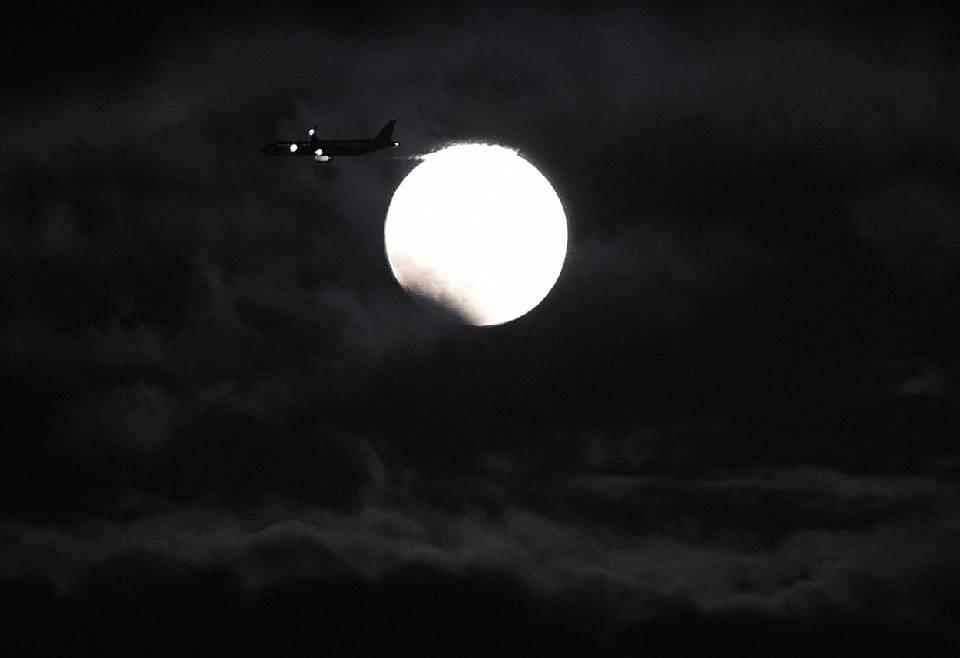
A total lunar eclipse is seen behind a ferris wheel in Tokyo, on October 8, 2014
In Hong Kong, free viewing locations were set up on a harborside promenade by the Hong Kong Space Museum for the public to observe the various phases on telescopes.
In Tokyo's Roppongi fashion and entertainment district, enthusiasts performed yoga exercises under the blood moon. Many others had climbed atop the city's skyscrapers to view the sky.
On Australia's east coast, a live video feed set up by the Sydney Observatory was hit by cloud cover, thwarting some viewers.
In New Zealand, the moon will be close to its highest point in the sky, according to Auckland's Stardome Observatory & Planetarium, making for a view of the spectacle unobstructed by buildings.
In Hong Kong, hundreds of patient onlookers of all ages lined the harborfront promenade late Wednesday hoping for a glimpse of the eclipse.
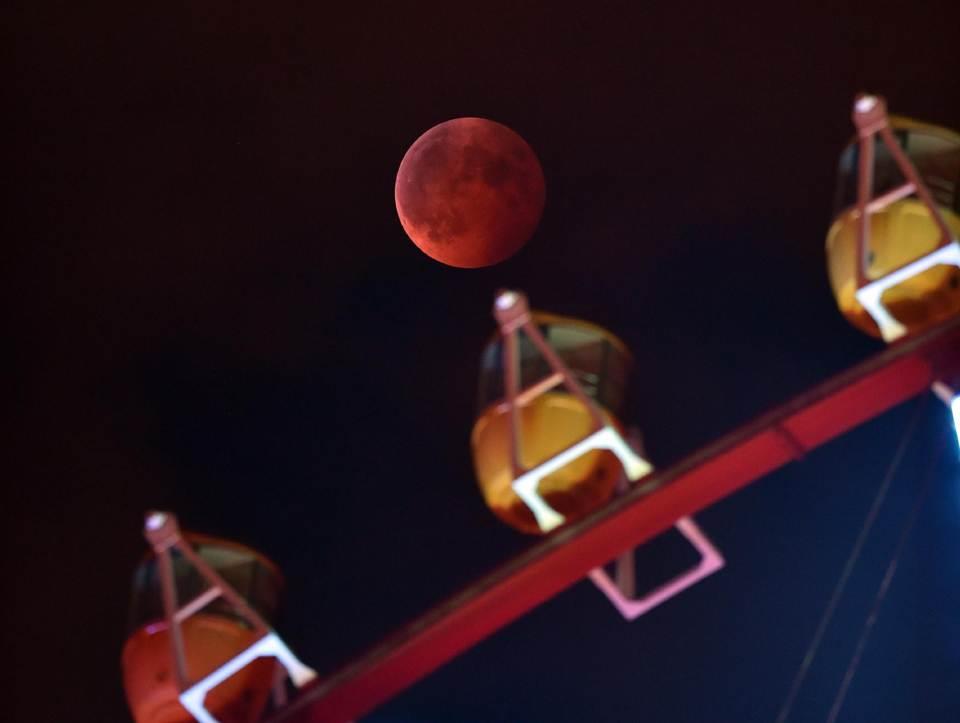
The beginnings of a lunar eclipse, seen from Japan on October 8, 2014. The moon only turns red when the moon is totally eclipsed
Many came armed with cameras and telescopes but on a cloudy evening in a city whose sky is rarely clear of pollution haze, it was visible only intermittently.
With tweets from across the viewing countries in Asia, one in New Zealand described the eclipse as "omg the sky is red right now… at 12:26 am in Auckland" with the hashtag "#sofreakingcoool ."
After clouds on Australia's east coast, the Sydney Observatory welcomed a sighting with "We saw the blood Moon finally!".
"Sydney skygazers didn't completely miss out tonight, though the cloud did dampen everyone's spirits early on," said the The Sydney Morning in a live report on the eclipse.
The event was not visible in Africa or Europe, NASA said.
The eclipse is the second of four total lunar eclipses, which started with a first "blood moon" on April 15, in a series astronomers call a tetrad.
The next two total lunar eclipses will be on April 4 and September 28 of next year.
The last time a tetrad took place was in 2003-2004, with the next predicted for 2032-2033. In total, the 21st century will see eight tetrads.
Courtesy: AFP
















































































































